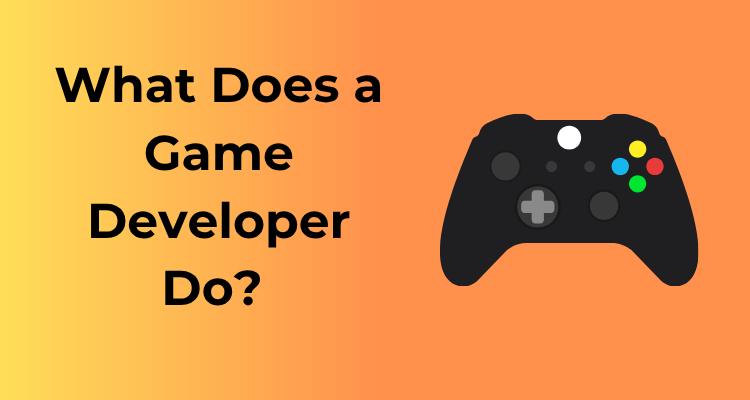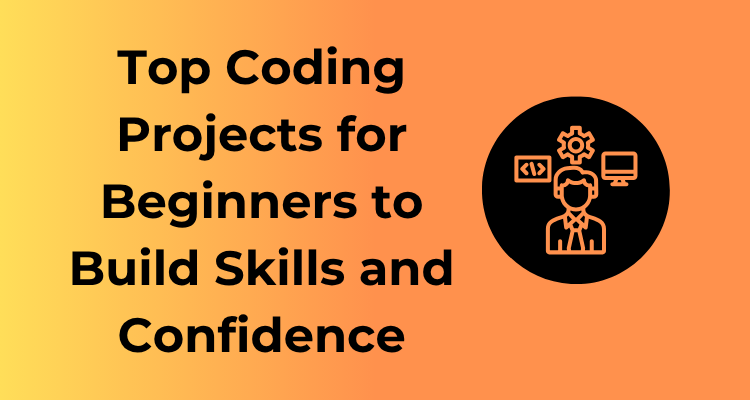Ever wondered where those spellbinding games you can’t put down actually start? It all begins with a spark of an idea. Game development isn’t just about coding or designing; it’s about creating entire worlds, crafting compelling stories, and engaging experiences that players will immerse themselves in. The roots of every great game lie in its creative vision.
At the heart of this process, game developers, along with designers and writers, brainstorm to figure out what the game will be about. Often, it starts with inspiration: a novel story concept, a unique game mechanic, or even an emotional reaction they want players to feel. For example, what if players could travel through time? Or build their own worlds? These “what if” questions are the cornerstone of brainstorming sessions. So essentially, games are born from curiosity, creativity, and a pinch of wild imagination.
The Ingredients of a Winning Game Idea
- Engaging Story or Concept: A good story or theme captures the player’s attention. Think of the epic battles in RPGs or the clever puzzles that keep players coming back.
- Unique Mechanics: Something that makes the game stand out in terms of gameplay, such as a new way to solve puzzles or an innovative multiplayer mode.
- Target Audience: Game developers also have to think about who will play the game. Is it for casual gamers? Hardcore esports enthusiasts?
The Collaborative Process
When an idea starts forming, it doesn’t belong to just one person anymore. Collaborative teamwork is layered into this creative phase. Designers, writers, and conceptual artists step in to flesh out the worlds, characters, and overall ‘feel’ of the game. This is when storyboards and concept art start coming together like pieces of a puzzle.
Here’s where it gets even more exciting: developers have to translate these ideas into something feasible given time, resources, and technical limitations. This step is as much about dreaming big as it is about practical problem-solving. Creative ideas have to make sense within the constraints of your tools, the platform (mobile, console, PC, etc.), and the skills of your team.
Why the Creative Vision Matters
Think of the creative vision as the game’s compass. In an industry where budgets are tight, release dates loom large, and the stakes are high, a strong vision keeps everyone on track. It ensures that the story, artwork, sound, and gameplay all come together cohesively. Without it, things can feel disjointed or directionless.
If you’re considering the field of game development, remember that your creative input matters. Your imagination can spark an idea that millions of players might one day spend hours exploring. While you don’t have to be the next groundbreaking visionary from Day One, practicing creativity and honing your storytelling skills can be a valuable asset as you break into the world of game development.
The Technical Backbone: Writing Code That Breathes Life into Games

Ever wondered how a game character moves smoothly through an intricately designed world, or how explosions, puzzles, and virtual weather make you feel like you’re in another dimension? The magic ingredient is code. Behind every frame of action lies a meticulously crafted web of logic, algorithms, and programming languages that breathe life into games. Let’s dive into what makes coding the true backbone of game development!
What Does Writing Game Code Mean?
Think of it as setting the rules of the universe for your game. Developers write code to determine everything: how characters behave, how interactions work, or even how a simple jump feels so satisfying when you press that spacebar. Much like an architect draws blueprints for a building, game coders create the blueprint for how the virtual world functions.
Languages of the Gaming World: Which Ones Matter?
Game developers don’t just throw random code together; they rely on specific programming languages suited for game development. Some big players include:
- C#: Used heavily with Unity, a major game engine. Perfect for indie creators and big studios alike!
- C++: Known for its speed and flexibility, this is a top choice for AAA blockbuster games and highly detailed simulations.
- JavaScript: Ideal for browser-based games. Imagine quick gaming fun with no installation required!
- Kotlin or Java: These languages power mobile gaming apps on Android.
- Swift: The heart of iOS mobile games.
While the choice of language depends on the platform and game engine, what matters most is mastering logic and problem-solving. Languages are tools, but creative thinking makes a developer exceptional.
From Skeleton to Functionality: Game Engines and Code in Action
If coding is the backbone, game engines are like the core muscles that allow this backbone to flex. Tools like Unity, Unreal Engine, and Godot provide frameworks for coders to seamlessly bring their ideas to life. Developers use these engines to:
- Write scripts that define game mechanics and logic, such as physics (gravity, collision) or scoring systems.
- Manipulate pre-built assets, animations, and effects to save time on coding from scratch.
- Integrate audio, user input, and even artificial intelligence. Ever watch an enemy NPC ‘learn’ to outmaneuver you? That’s advanced coding in harmony with the engine.
Coding as an Art: Lessons for Aspiring Developers
Whether you’re dreaming of crafting a colorful indie platformer or the next big open-world RPG, the key to coding is to embrace it as an art form. Each line of code creates a pathway for players to explore, interact, and immerse themselves in your creation. Pro tips include:
- Practice Problem-Solving: Puzzles and debugging can be tough, but they’re where growth happens. Treat every challenge as a learning opportunity.
- Think Like a Player: Ask yourself how the gameplay *feels*. Coding isn’t just technical; it’s experiential.
- Never Stop Learning: Game engines and coding languages evolve! Keep an eye on trends and new technologies.
Why Coding Feels Like Magic
As you progress in game development, there will be moments when you encounter your own work and think, “Wow, I made that happen.” A line of code might instruct a character to walk forward, but when dozens of scripts work together seamlessly, you’ve built not just a game, but an experience. That’s the power of the technical backbone—a quiet, logical symphony that makes the gameplay unforgettable.
Team Dynamics: Collaborating with Designers and Artists
In the exciting world of game development, collaboration is as vital as creativity and code. Imagine for a moment a highly detailed open-world adventure game. It takes more than just good coding to make it come alive—it requires the combined forces of diverse talents. This is where team dynamics shine.
Game developers work hand-in-hand with designers, artists, and sometimes even musicians to ensure that the final product is cohesive and engaging. It’s a symphony of skills, and everyone brings their unique expertise to the table. Let’s dive a little deeper into how these professionals collaborate and why teamwork is absolutely essential in game development.
Understanding Roles and Responsibilities
First things first, everyone on the team has distinct roles. Designers are the dreamers—they conceptualize gameplay mechanics, storylines, and levels. Artists bring visual elements to life, from character models to environmental backdrops. Game developers, meanwhile, are the brain behind the operation, translating all these components into code that makes the game playable. But no role exists in isolation.
- Communication is King: Developers need to fully understand what designers are envisioning and how artists are painting the world. Clear communication ensures that there’s no disconnect between the dream and the deliverable.
- Feedback Loops: Developers might run into technical challenges that require adjustments from the other teams. For example, an artist’s intricate design might increase processing load. They need to discuss compromises so that the vision remains intact but still runs smoothly in the game.
Making Collaboration Fun and Productive
Imagine sitting around a table (or in a virtual meeting) with a team of creative geniuses—brainstorming game worlds, characters, and plot twists. Sounds amazing, right? But collaboration isn’t just about fun ideas; it’s also about organization and respect.
- Tools Are Your Best Friend: Game development teams rely on project management platforms like Jira or Trello to track progress. Version control systems like Git ensure that everyone works on the latest code without stepping on each other’s toes.
- Establishing a Common Language: A developer might talk about frame rates and physics engines, while a designer might focus on emotional pacing in storytelling. Finding a shared vocabulary is critical to avoid misinterpretation.
The Value of Diverse Perspectives
One of the most rewarding aspects of teamwork in game development is gaining new perspectives. Have you ever thought about how a developer might approach gameplay mechanics differently than an artist? These differing viewpoints often lead to innovative solutions and “aha” moments that improve the game dramatically.
For instance, an artist may propose a vibrant color palette that pops on-screen, but the developer might suggest tweaks to enhance visibility for players who are colorblind. When these perspectives come together, the game becomes more inclusive, engaging, and, ultimately, successful.
The Role of Testing: Ensuring a Smooth Gaming Experience
Let’s talk about something that might just be a gamer’s secret hero: game testing. If you’ve ever played a game that felt flawless—where the controls responded perfectly, the graphics looked incredible, and glitches were nowhere to be found—there’s a good chance a lot of behind-the-scenes testing went into making that happen. Testing might not sound as glamorous as designing epic battles or coding mind-blowing effects, but trust me, it’s absolutely essential. So, why is it so important, and what goes into it? Sit back, and let’s take a closer look.
Why Testing Matters More Than You Think
Imagine this: You’re deep into an intense game—your favorite RPG, shooter, or puzzle quest—when suddenly, your character disappears through the ground, falling into infinity. Frustrating, right? This is the kind of thing that testing seeks to prevent. It’s all about identifying issues—technical bugs, visual glitches, gameplay design flaws—and fixing them before players even get their hands on the game. A smooth, enjoyable gaming experience doesn’t just happen; it’s carefully nurtured through rigorous testing stages.
By the way, testing doesn’t only catch mistakes. It also helps developers see whether a game is fun to play. After all, the smoothest mechanics in the world won’t save a game that just isn’t enjoyable. By engaging with testers, developers can refine the experience until it’s as thrilling as intended.
The Different Types of Game Testing
Game testing is like a buffet—there’s no one-size-fits-all category. Different tests target different aspects of the game. Here’s a quick look at some major types:
- Functional Testing: The bread and butter of testing. This ensures that all in-game systems and mechanics work properly. Is the character able to jump? Does the “Game Over” screen appear when it should?
- Performance Testing: This ensures the game runs well across different systems. A game might run smoothly on a high-powered gaming PC but lag horribly on a mid-range console. Performance testing ensures every player, regardless of their hardware, gets a seamless experience.
- Compatibility Testing: With so many devices, platforms, and operating systems, it’s crucial that the game works as expected on all of them.
- Playtesting: This goes beyond bugs—it’s when testers actually play the game and provide feedback on gameplay experience. Is it fun? Balanced? Too hard?
How Developers Handle Feedback
Nobody likes hearing that something they’ve worked hard on isn’t quite hitting the mark, but for game developers, handling constructive feedback is a key part of the process. After testers report bugs or give feedback, developers review this information carefully. They may even prioritize fixes based on severity. For example, a bug that crashes the game would get immediate attention, while a minor graphic glitch might be less urgent.
Testing isn’t always a linear process either. Sometimes fixing one issue can create two new ones (we call this the butterfly effect of coding). Developers and testers go through these cycles—called iterations—until the game achieves the desired level of polish.
Tools of the Trade: Software and Languages Every Developer Uses
Ever wondered how your favorite video games come to life? Dive into the toolkit of a game developer, and you’ll find a mix of cutting-edge software, programming languages, and technical wizardry that turns imagination into immersive digital worlds. Let’s take a closer look at the must-have tools in every game developer’s arsenal. Ready? Let’s go!
1. Game Engines: The Digital Playground
A game engine is like the powerhouse behind most games, providing a framework where developers can build their ideas. Some of the most popular ones include:
- Unity: Known for its versatility, Unity is a go-to engine for both beginners and professionals. Whether it’s a 2D mobile game or a sprawling 3D world, Unity has you covered.
- Unreal Engine: Famous for its stunning graphics and realistic lighting, Unreal Engine is a powerhouse for AAA games. If you’ve ever played games with jaw-dropping visuals, it’s probably thanks to Unreal.
- Godot: Open-source and user-friendly, Godot is gaining traction among indie developers who love its flexibility and zero-cost appeal.
These engines come packed with tools for rendering, physics, animation, and more. They simplify what could otherwise take years of development into a manageable timeline!
2. Programming Languages: Speaking the Language of Games
Behind every playable game is a stack of code that breathes life into its mechanics. Here are some of the key programming languages game developers rely on:
- C++: Known for its power and performance, C++ is a cornerstone language for AAA game development. If you’re into optimizing every bit and byte, this is your go-to.
- C#: If Unity is your choice of engine, then you’ll likely work with C#. It’s simpler than C++ but just as effective, making it great for beginners and seasoned developers alike.
- Python: While not as common for heavy-duty game development, Python is excellent for rapid prototyping and AI scripting. A versatile language for those dabbling in different aspects of development.
- JavaScript: Essential for browser-based and online games, JavaScript plays a big role in keeping web-based experiences running smoothly.
3. Supporting Software: Art, Audio, and Animation
Games aren’t just about code—they’re a beautiful mix of visuals, sounds, and storytelling. Developers often collaborate with artists and sound designers using specialized software like:
- Blender: For creating 3D models, textures, and animations. Bonus: It’s free!
- Adobe Photoshop: A staple for 2D art, UI design, and textures.
- Ableton Live: Frequently used for mixing soundtracks or integrating sound effects.
These tools ensure that every pixel, note, and movement in the game delivers a polished experience.
4. Development Collaboration Tools
Since most games are built by teams, collaborative tools like Git (version control) and software like Jira or Trello for task management play a vital role. Keeping track of progress and working in sync ensures that everything runs like a well-oiled machine.
Adapting to Trends: Keeping Up with Modern Gaming Expectations
Gaming has come such a long way, hasn’t it? From the pixelated 2D worlds of the past to the hyper-realistic, immersive universes we experience today, game developers are always working to stay ahead of the curve. But how do they do it? Well, keeping up with modern gaming expectations is both an art and a science, and developers have to constantly adapt to trends and advances in technology.
1. Understanding Player Preferences
The gaming community is diverse and dynamic, and staying in tune with what players want is essential. Do players crave open-world exploration, or are they hooked on competitive multiplayer action? Developers often analyze player feedback, track trends on social media, and dig into data from game forums to uncover what gamers are passionate about. It’s not just about making games they love—it’s about making games you’ll love!
2. The Rise of Streaming and eSports
Let’s face it: gaming is no longer just about playing. Platforms like Twitch and YouTube have turned gamers into performers, with audiences of millions tuning in to watch their avatars conquer digital worlds. Developers are now creating games that factor in spectating. From adding features that help streamers connect with their viewers—like custom overlays—to designing gameplay that’s as entertaining to watch as it is to play, this trend has transformed how games are built.
3. Embracing New Technologies
Virtual reality (VR), augmented reality (AR), ray tracing, and AI-driven characters—technology moves fast, and those at the heart of game development need to move faster. The rise of VR headsets like Oculus or AR experiences like Pokémon GO have forced developers to think outside the box, creating new gameplay mechanics that weren’t possible even five years ago. The key here? Always being ready to learn and experiment with new tools.
4. Microtransactions and Free-to-Play Models
Gaming’s economic models are shifting too! Developers are grappling with how to make engaging games that incorporate modern monetization methods. Free-to-play games dominate the industry, but balancing fun gameplay with optional microtransactions can be tricky. Nobody wants a game that feels ‘pay-to-win.’ This careful balancing is part of adapting to what players are willing (or unwilling) to pay for.
5. Creating for Diversity and Inclusivity
Inclusivity has rightly become a major focus in the gaming world. Players want to see themselves represented in the games they play, whether it’s through diverse characters, customizable avatars, or accessible features. Developers are adapting by making sure their games reflect a variety of experiences and ensuring accessibility for gamers with disabilities.
6. Staying Ahead of Industry Standards
Gaming is one of the fastest-evolving industries out there. Developers don’t just meet expectations—they set them. They stay informed by attending conferences (like Game Developers Conference), learning from peers, and diving into the latest research in areas like graphics and AI. It’s a constant process of growth, but staying ahead of industry standards often results in games that feel fresh and exciting for players.
Behind the Screens: Common Challenges in Game Development
Game development might seem like an amazing ride of creative breakthroughs and technical wizardry—and it absolutely can be! But let’s not skip over what happens *behind the screens*. Even the most talented game developers face significant challenges that often feel like leveling up in an impossibly difficult boss fight. Let’s dive deep into the hurdles and obstacles developers tackle to bring your favorite games to life.
1. Concurrency of Creativity and Technology
Game development is like trying to synchronize two entirely different music bands. On one side, you have the creative team—the people envisioning breathtaking environments, compelling characters, and unforgettable storylines. On the other side, there’s the technical side, turning those creative dreams into something playable.
These two elements must work in perfect harmony. Sometimes, a creative idea is brilliant but impractical to implement with the available technology. Other times, the tech offers exciting possibilities, but the creative input might lag behind. This constant balancing act is a major challenge that successful developers learn to juggle.
2. Crunch Time and Burnout
If you’ve heard of “crunch,” you’ll know it’s a hot topic in the game development world. Crunch refers to extended work hours—sometimes stretching far beyond normal limits—especially when a game is nearing its release date. While crunch can help meet deadlines, it exacts a heavy toll on the health and well-being of developers.
Thankfully, modern studios are becoming more aware of the damage caused by crunch culture and have started implementing better work-life balance practices. For aspiring developers, it’s a good idea to research studio cultures before joining—choose workplaces that value long-term well-being over short-term sprints.
3. Unrealistic Player Expectations
Gamers are passionate folk (and rightly so!), but we can sometimes have sky-high expectations. Developers often feel the pressure of delivering groundbreaking mechanics, jaw-dropping graphics, and a seamless experience—all on a strict timeline and budget. If the game doesn’t match the hype, fans can be quick to criticize, which may negatively affect the morale of the development team.
A great way developers address this issue is by maintaining open, transparent communication with the community. Some studios invite players to join beta tests or early access programs, giving users an opportunity to provide feedback while lessening the “surprise risk” upon full release.
4. Unforeseen Bugs and Glitches
If you’ve ever experienced a hilarious glitch in a game, spare a thought for the poor developer who probably had a minor meltdown while trying to fix it! Debugging is one of the most unpredictable parts of game development. A seemingly tiny bug can spiral into massive issues, eating up hours, days, or even weeks of production time.
To tackle this challenge, developers employ rigorous testing processes (as we explored earlier) and use debugging tools to track down problems. Still, creating a 100% bug-free game is pretty much impossible given how complex games have become.
5. Budget Constraints
Not every game comes backed by the budget of a blockbuster Hollywood film. Independent and smaller studios often have to work magic with limited resources. This can mean cutting corners, dropping certain features, or scaling back on ambitious graphics. It’s all about maximizing impact while staying within financial boundaries.
For developers working in such environments, mastering prioritization is key. Ask yourself: “What will make the biggest impression on players?” Focus time, energy, and budget on refining those core features to perfection.









